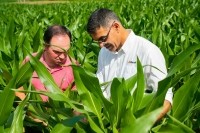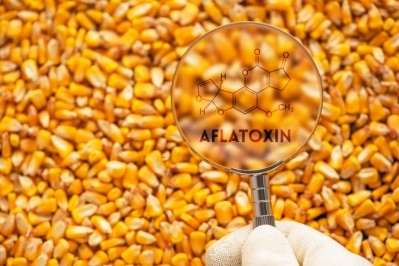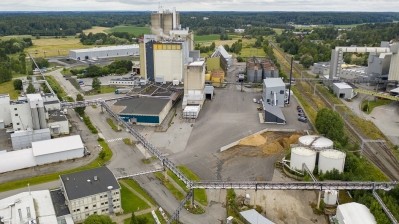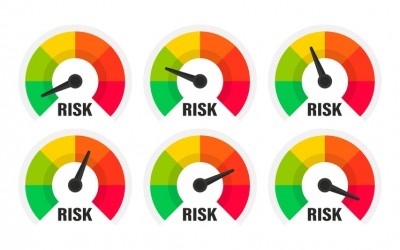Alltech analysis sees high levels of aflatoxin in corn samples across Central and Eastern Europe

Turbulent weather across Europe, including drought, throughout the 2021 growing season has directly impacted the presence of molds and mycotoxins in new crop grains and forages, said the US headquartered company.
The 2021 Alltech European Harvest Analysis sees the company collaborating, for the first time, with SGS, a world leader in mycotoxin testing services.
Combining these resources with findings provided by the Alltech 37+ mycotoxin analytical services laboratory, this year’s analysis offers the most comprehensive insights yet, it reported.
The results are based on 1,194 samples of barley, wheat, corn, corn silage, grass silage, alfalfa haylage, triticale, straw and whole crop silage - wheat and barley.
“The samples were collected from farms or animal feed production sites across Europe and offer a representative picture of the contamination risk in all regions, with an overall moderate to high risk.
“Across all samples, there was an average of 4.34 mycotoxins detected, with 98.5% containing at least one mycotoxin and 86,1% containing two or more mycotoxins.”
Likely impact on livestock production
Pig producers should be aware, said Alltech, that the corn risk level, based on the average risk equivalent quantity (REQ) for breeding sows and young piglets, is deemed to be moderate to high, while the risk coming from small grain - wheat and barley - is low, with certain pockets of moderate to high risk.
When the mycotoxin corn contamination levels are applied to poultry, the mycotoxin risk for breeding birds, broilers and layers is moderate, while the risk coming from small grain is low, it added.
In ruminants, the results from the corn and forage samples analyzed so far indicate a moderate to high risk in dairy cows, said the firm.
Notable increase in aflatoxin contamination
Type B-trichothecenes were found in 87% of the grain samples, a similar number to last year.
The highest concentration of deoxynivalenol (10,914 ppb) was detected in a Danish straw sample.
Out of over 600 corn samples analyzed, 24% of these contained aflatoxins, a notably higher percentage than 2020 and something feed and livestock producers should be aware of when putting mycotoxin control plans in place for the coming season, said Alltech.
Of the corn samples analyzed, using an LC-MS/MS method, fusaric acid was the most prominent mycotoxin, detected in 96.74% of samples, while type B-trichothecenes and fumonisins were found in 90% and 83% of samples, respectively, according to the report.
“One of the key themes appearing this year was the overall high levels of aflatoxin in corn samples across Central and Eastern Europe. This can likely be attributed to drought in the region adversely impacting crop quality. A number of the samples tested exceeded regulatory levels for the mycotoxin, posing a direct risk to livestock and creating concerns about the subsequent impact on milk quality.
“The analysis also revealed a unilateral low mycotoxin risk across the tested areas for small grains, such as wheat and barley. This year was also the first time a representative quantity of straw samples for use in swine production were tested, revealing a higher risk of mycotoxins, with DON being the most prevalent.”
Emerging mycotoxins
A noticeable trend in recent years is the growing presence of emerging mycotoxins. While last year more than 75% of samples contained this group, which includes specific mycotoxins such as beauvericin, moniliformin, phomopsin A, alternariol and enniatin A and B, this year 77% of small grain - wheat, barley and triticale - samples contained emerging mycotoxins, found the analysis.
Fusaric acid, which is reported separately but also belongs to emerging mycotoxins, was found in almost 6% of small grain samples. Fusaric acid gets into many mycotoxin interactions and has a synergistic effect with other mycotoxins like fumonisins and moniliformin, said the company.
Zearalenone (ZEN), a mycotoxin that can significantly impact the fertility of most species groups, was detected in 46% of grain samples.
Type A-trichothecenes (T-2 toxin/HT2-toxin), particularly harmful toxins, were detected in less than 43% of the samples — a percentage potentially higher than expected considering the dryer-than-normal conditions across much of Central and Eastern Europe this year. Very high levels of T-2 toxin (2,545 ppb) have been detected this year in corn collected in Eastern Europe, as per the survey.
"Overall, the current results indicate a moderate to high mycotoxin risk across Europe this year, and producers must remain aware of how the risk and impact will vary between different species and animal groups, with breeding animals and young stock being more susceptible,” commented Dr Radka Borutova, European technical support manager, Alltech mycotoxin management.
Forages
The analysis also contains information about mycotoxin contamination of forages.
Alltech said that 126 samples of corn silage, grass silage, wheat and barley whole crop silage and alfalfa haylage across the continent were analyzed.
Samples, it said, show an average of 3.2 mycotoxins, with 100% containing at least one mycotoxin and 96.8% containing two or more mycotoxins.
Type B-trichothecenes were found in 97% of the samples, while 95% contained fusaric acid. Nearly 50% of forages contained Penicillium mycotoxins, and less than 1% of samples were contaminated with aflatoxin B1. The maximum concentration of Penicillium mycotoxins was found in the UK in grass silage, and the concentration was 3,946 ppb.
The results from the forage samples evaluated also indicate a moderate to high risk in dairy cows, beef cattle and heifers, said the producer.
Aflatoxin B1 threat
Aflatoxin levels (AfM1) in milk for human consumption cannot exceed 0.05 parts per billion (ppb; µg/kg), according to EU rules, which means complete feedstuffs are limited to 5 ppb Aflatoxin B1 when used in dairy diets, said Alltech.
Any feed material is limited to 20 ppb Aflatoxin B1 as per EU Commission regulation (EU) No 574/2011.
“This year’s weather conditions in Central and Southeast Europe - Hungary, Serbia, Romania, Croatia - have made this mandate a real challenge for local dairy farms.
“The average levels of mycotoxins identified fall below the EU-recommended levels for each of the mycotoxins when assessed individually. This year, 4.2% of corn samples exceeded the EU-allowed concentration of Aflatoxin B1 in feed ingredients, which is a very high incidence compared to the previous year, where only 0.36% of samples exceeded EU-allowed concentrations. However, the risk level for productive species based on Alltech's REQ varies from moderate to high when the multiple-mycotoxin challenge is considered.”








